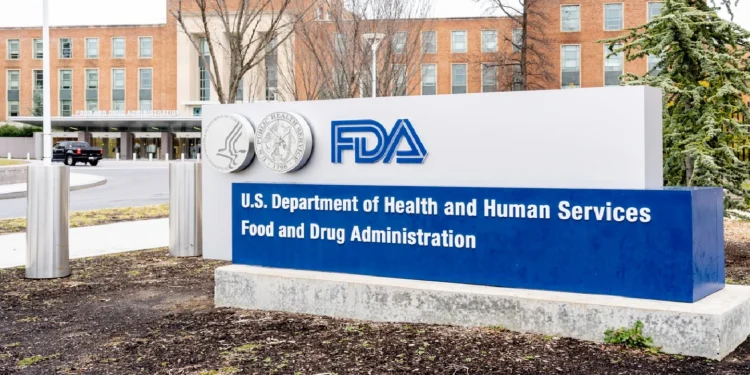Men lie, women lie, but the numbers never lie: or so the saying goes. But in following the FDA, it seems they bend data to varying degrees of transparency and truthfulness.
Through this kaleidoscope of distortions, the FDA has made decisions that defy traditional scrutiny of clinical data. The most egregious example of late is the FDA’s decision to allow pharmacists to prescribe Paxlovid, an anti-viral medication that helps relieve COVID related complications among symptomatic patients.
It comes as a response to calls asking for more access to COVID-19 treatments. But curiously, the same access was not provided to a competitor drug, Lagevrio.
“The FDA has determined that Lagevrio should only be prescribed by traditional prescribers,” the FDA wrote in an email. “This determination is based on several factors, including the drug’s side effect profiles and the need for provider-patient consultation.”
But according to a federal claims database, more than 40 percent of adults diagnosed with COVID were at risk for drug-drug interactions (DDIs) that would disqualify them for Paxlovid. At such a high percentage, it is unclear what side effect profiles distinguish Paxlovid from Lagevrio.
This is to say nothing about the existing data on Paxlovid. As incredulous as it may sound, Paxlovid, which is prioritized for high risk patients, presumably elderly patients who have already been vaccinated three if not four times already, has never been formally studied in vaccinated populations. It appears the FDA does not like data from randomized controlled trials.
The FDA also seems to dislike a consistent approach to public health issues. It most recently grabbed media attention by announcing and then quickly softening its stance on banning vaping products from the company Juul, the market leader in electronic cigarette products.
The move came as concerns grew that adolescents were abusing vaping products and suffering acute lung injuries. Never mind the benefits these products hold for patients seeking to quit traditional cigarettes. No, the FDA focuses more on the risk of diversion and abuse among those who willfully misuse a product than the intended benefits the product confers.
As a result, a ban was issued and then retracted. And the FDA and Juul are on another collision course in which antiquated notions of moralization confront clinical principles of harm reduction. Which is bad enough, but what makes the entire ordeal bizarre is the FDA’s contradictory stance on abortion access and birth control medications.
In recent weeks, the FDA announced it is considering approving an over-the-counter birth control pill, which would be the first of its kind. And it has no plans to curb access to abortion medications anytime soon. The agency made it clear that it supports access to such medications as a fundamental medical right.
Apparently, the FDA believes that harm reduction applies to pregnancies and safe sex practices, but not to cigarette smoking.
These oddities extend beyond the FDA’s decision-making. It cannot even manage its site inspections properly. We know of the inspection debacle leading to a national baby formula shortage. It has been well covered. But it is far from an anomaly. Just recently, a similar situation led to a delay in Monkeypox vaccine production following a delay in a site inspection by the FDA – right when the virus is spreading across the globe.
All of this alludes to a sense of incompetence; that the FDA does not know what it is doing, and makes decisions or takes actions on a whim, without a clear regard for consequence or consistency. But the truth is far more subtle, far more pernicious.
The FDA is rife with inconsistencies and errors because it has conflicting interests that lead to all manners of incentives. Just look at the FDA’s attempt to lower drug prices. The FDA made any pursuit of fair competitive practices among generic and biosimilar drugs practically impossible. It now requires new entrants seeking to manufacture low cost generic drugs to declare their intention to manufacture through a series of announcements that stand for one to two years. What these announcements consist of and to whom they need to be reported are poorly defined and overtly subjective. Not to mention a one to two year span is hardly enough time to ramp up manufacturing for drugs that can easily take a decade to manufacture.
These convoluted practices are by design. It feigns incompetence as a cover for malfeasance. And it reveals the many layers of perverse incentives within the FDA. Through such a system, the FDA decrees decisions without proper diligence of any data. All that is needed is the veneer of oversight laden with jargon-rich buzzwords that give off the pretense of authority.
In a way, the FDA has become its own court of sorts, acting as judge, jury, and executioner, all in one.















